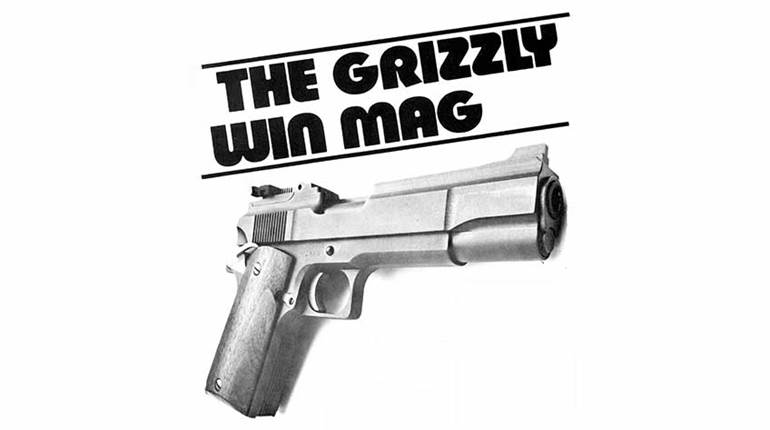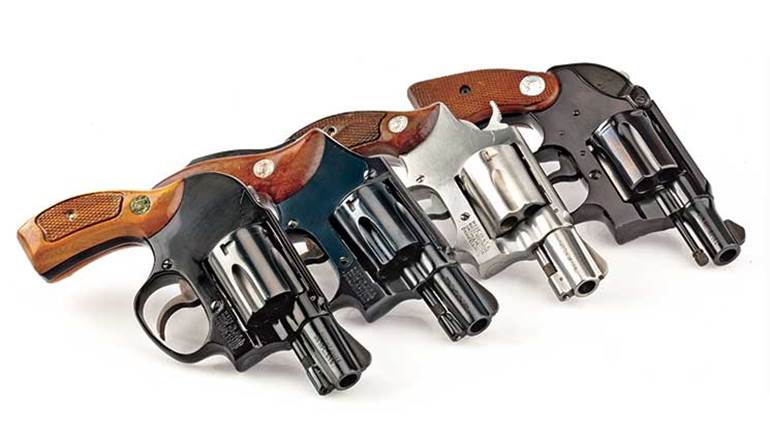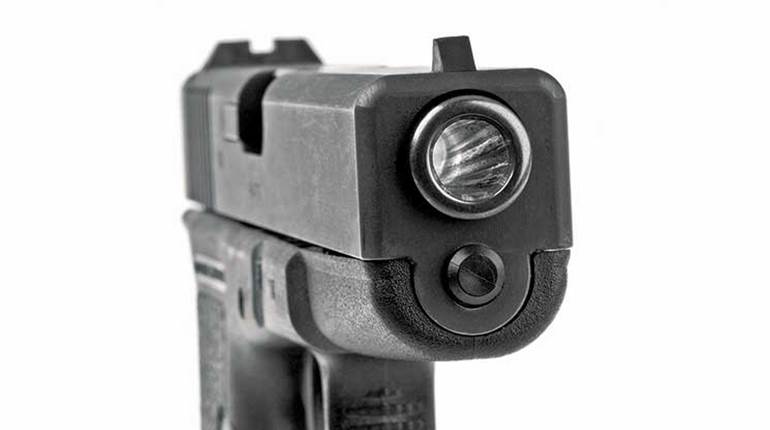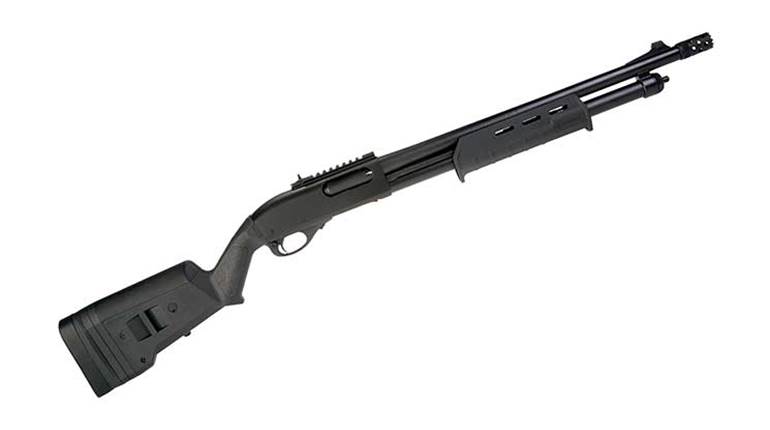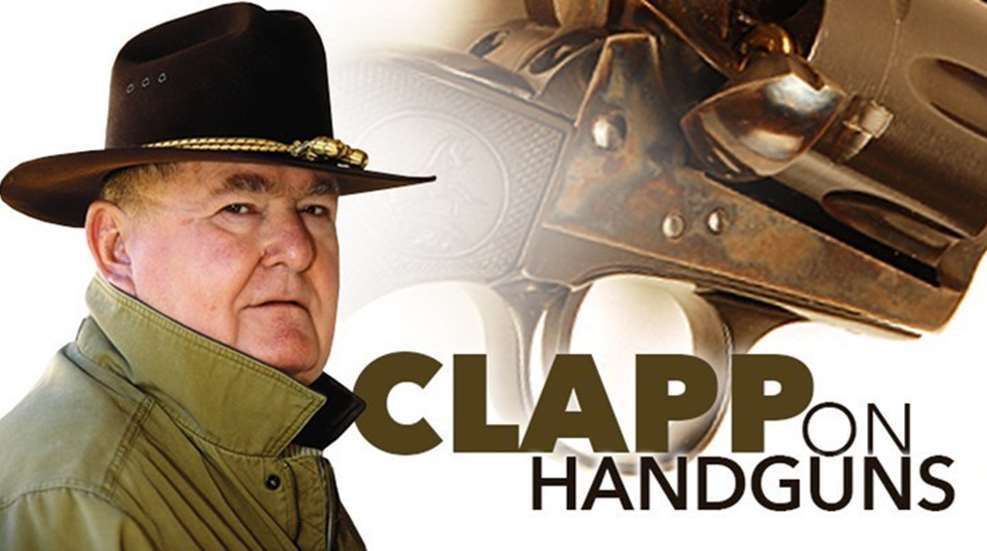
Very soon after guns began to be common and bullets therefore necessary, designers set about finding the ideal material from which to make them. They found it in nature—lead. A heavy, dense, malleable metal that liquefies at relatively low temperature, lead was the first choice for bullets. It was used before technology advanced to the point where iron and steel alloys existed that could be used to produce bullet molds. For several centuries, virtually all bullets were made in molds, a tedious process at best. It is also true that early bullets were usually balls—spherical in shape. But in the early decades of the 19th century, the concept of rifling a firearm's bore grew in popularity. This technique had enormous advantages in accuracy and efficiency, but worked best when the bullet was cylindrical, at least partially. We began to see bullets for many types of guns with a cylindrical shank that rode the bore and a pointed or rounded tip that increased efficiency in flight. Around the time of the Civil War, we saw the introduction of the metallic cartridge. Combining the pressure-sensitive priming compound with a charge of gas-producing combustible powder and a lead bullet in a thin metal bottle, the cartridge was a breakthrough of momentous proportions.
Some of the early black powder cartridges were efficient in not only their interior and exterior ballistics, but also in the terminal sense. A half ounce of lead traveling at 900 feet per second spells trouble for any living thing in its path. This was firmly established on the American Frontier and other trouble spots world-wide. It was also in this period that shooters began to see troublesome leading—deposits of the bullet material—in the bores of their firearms. This gave rise to the practice of using various harder metals, alloyed with pure lead, to make the bullet harder. Also, industry began to develop the process of swaging bullets in huge presses, where they are literally mashed into shape. And the shape of the bullet itself began to change.
It should be obvious that the “pointier” (coined a word!) a bullet is, the more efficient it will be in flight and the more likely it will penetrate in the target. As it happens, the pointier the bullet, the harder it will be to cast in even a hard lead alloy and the more fragile the bullet will be in handling. In rifles, we began to see longer, round-nosed bullets. In those days, handguns were all revolvers, where bullet shape was partially mandated by the rather short length of the revolver cylinder. It's pretty easy to see where this is going. If you want weight in your revolver bullet, you opted for a sort of blunt, round profile. As a matter of fact, the British had been fighting hard-to-stop natives in Africa and India and had learned that extreme penetration might not be as necessary as they thought. Their big Webley revolvers had .455 bores and took bullets weighing well over 200 grains. Some of the ones they tried were so-called full wadcutters. These were literally cylinders of lead, about as streamlined as a gallon paint can. One of these was the so-called “Man Stopper” bullet.
Although I can't be certain, I believe this is the first use of a hollowpoint type expanding bullet. In this type of projectile, there is a cavity centered in the nose of the bullet. When the soft lead bullet strikes tissue, the cavity instantly fills with moisture and the front end begins to radially distort outward. This causes the bullet diameter to increase, as the bullet length decreases. Recovered hollowpoint bullets often take on a somewhat mushroom-shaped contour. This prompts the use of the word as a verb, as “to mushroom.” There are big advantages to having this happen. For one thing, the expansion of a bullet tends to transfer the bullet's striking energy to the target more quickly. Also, since the bullet's cross-sectional area increases, it tends to slow down quicker. Compared to a more pointed solid, an expanding hollowpoint penetrates less deeply. That fact is an argument for hollow points in congested locales, not against them.
In the same turn-of-the-century (19th to 20th) period, a new type of repeating handgun came into common use. The new-fangled automatics dispensed with the oh-so-familiar cylinder for the ammo supply. Instead, they stacked cartridges in sheet metal boxes called magazines, usually housed in the butt of the pistol. It was an innovation that served most of all to speed up the reloading process in hotly contested engagements. Mechanically, the automatic pistol was much more complicated in its operation, since the cartridges had to be moved from the magazine to the single firing chamber. Cartridges with soft lead bullets did not respond well to all that slithering around inside the pistol. Thus was born the need for metal jacketed bullets for automatic pistols. They were better in other ways, too. More efficient in their performance in the barrel, the early jacketed bullets were a lot cleaner to use. It's pretty certain that the fabled .45 ACP cartridge and 1911 pistol would not have done so well without the FMJ—full metal jacket—bullets.
Until the great increase in American shooting right after World War II, it was generally lead for revolvers and copper jacket for autos. Then we began to see attempts to combine the two, with the half-jacketed bullets of the 60s and 70s. Also, the writings of an experienced cowboy out in Idaho had finally achieved the attention and respect they richly deserved. Elmer Keith brought the cast bullet shape to near perfection with his Keith semi-wadcutter design. Very savvy engineers were given the job of designing new jacketed hollow points (JHPs) when the high cap 9mm autos became the gun to have. They did their work well—and the work continues to date.
In the 80s and 90s, the learning curve for expanding bullet design went straight up. It continues with expanding bullets that do not always use the hollow point principle. Some of them borrow from the principle of the Hoxie bullet company of Chicago, a turn of the century ammo company that used a cone shaped cavity in the soft lead, into which they embedded a BB. When the BB hit the target, it was forced deeper into the cone and the bullet expands. Today's high performance ammo also still uses the JHP concept, augmented by changes in the density of the lead core and nature of the jacket that carries it downrange to impact. We have even learned to bond core and jacket better, as well as shape the cavity with posts, ribs and flutes to achieve better performance than ever before. Meanwhile, the revolver purists still happily engage targets at great range with Magnum revolvers using LSWC bullets designed generations ago.












